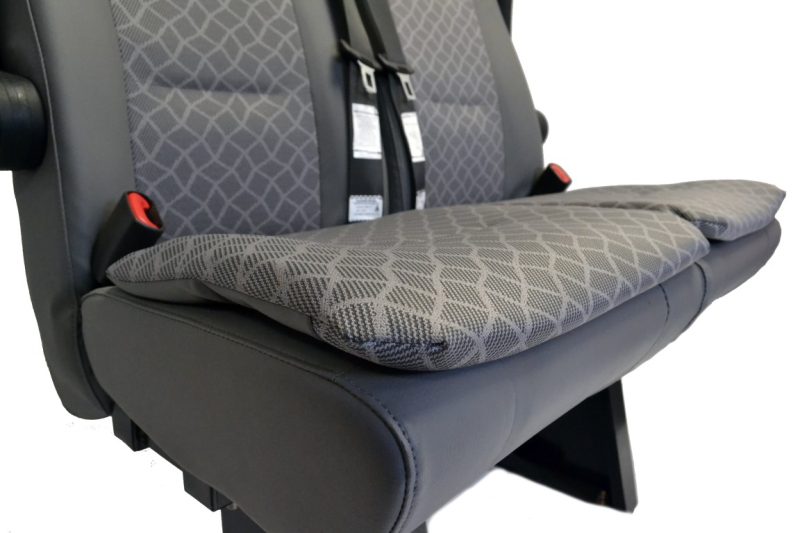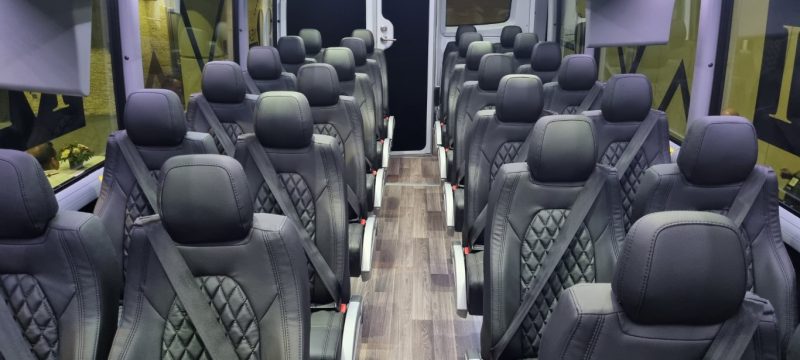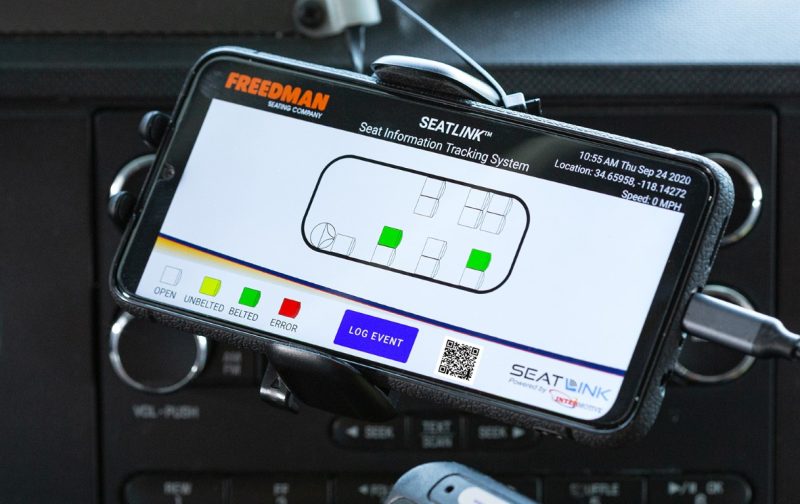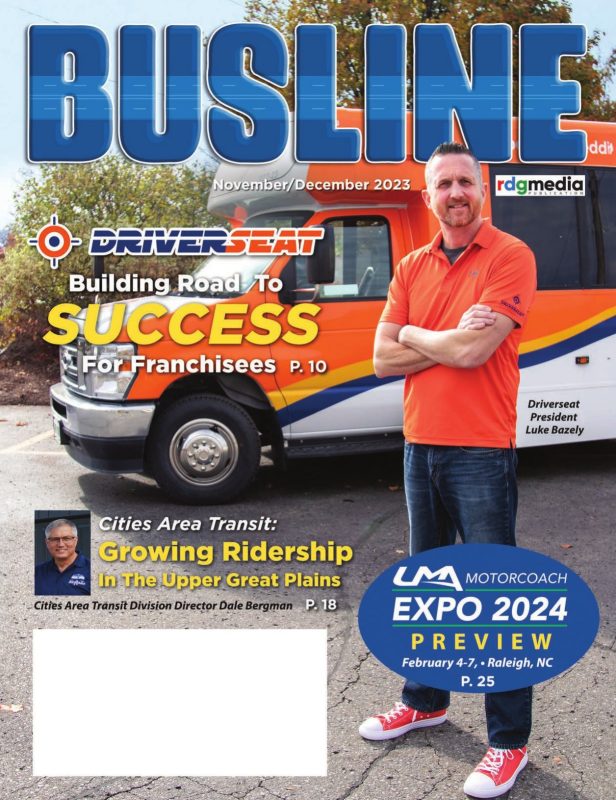From flooring to HVAC, cameras to wheelchair lifts, there is no shortage of must-have components to consider when purchasing a bus. Whether propane or electric, shuttle or coach — passenger needs should be heavily considered when it comes to the bus’s interior, perhaps nothing more than seating.
Here are three features you should have already been asking for in 2023; and if not, should consider standard in 2024 for passenger seating and occupant safety:
 High performance covers
High performance covers
Nothing catches the eye of a boarding passenger more than the seats — or the seat covers. For the longest time, seat covers were often an afterthought compared to other aesthetics like wall panels and flooring, or they were radically designed to give a bus its character. In the 2010’s, the industry became more conscious about performance, i.e., abrasion resistance, flammability and smoke generation (Docket 90), moisture repellency, UV Light resistance, etc. The pandemic sped up the need and demand for higher performing fabrics and vinyl, with emphasis on antimicrobial/antibacterial characteristics.
Pro Tip: By default, vinyl is considered moisture resistant. But not all vinyl is antimicrobial/antibacterial. Don’t overlook flat woven fabrics, which can be treated to not only be moisture resistant but can be engineered with silver ions, known to suppress the growth of algae, mold, mildew, fungi and bacteria growth and proliferation which cause unpleasant odors, discoloration, staining, and deterioration of the product.
 3-point seat belts
3-point seat belts
In 1959, Volvo made automotive history when they sold the first car equipped with a 3-point belt system. Yet here we are, going into 2024, and 3-point belts are on a list of trending features in bus seating. It’s no secret that the industry has been slow to adapt; however, we are moving in the right direction thanks to passengers demanding safer buses and Federal Motor Vehicle Safety Standards evolving. In fact, the U.S.’s largest supplier of commercial transportation seating reports that 40% of passenger seats built in 2022 were 3-point, compared to 22% in 2019.
Pro Tip: Look for 3-point belted seats with switchable from being ALR (Automatic Locking Retractor) to ELR (Emergency Locking Retractor). ELRs only lock and will hold the passenger in place when they sense an emergency, i.e. a sudden deceleration or crash. ELRs are considered more comfortable because they allow a passenger to move about until an emergency is detected. An ALR will automatically lock after the belt webbing has been extended past a certain point. It is then allowed to retract slightly but will only get tighter until it is fully retracted to reset the system. An ALR is required by law to secure a child seat, when not using CRS hooks and tether. Seats with a switchable ELR/ALR offer the ability to toggle between the two locking retractor mechanisms as preferred by the bus operator.
Bonus Pro Tip: Shoulder belts that are height adjustable give all occupants a safe and comfortable ride, regardless if it’s a child or adult passenger.
 Occupancy monitoring
Occupancy monitoring
Admittingly another option made famous in automotive, the newest product to hit the bus market tracks and stores the occupancy and seat belt status of passenger seats in a vehicle. These systems allow vehicle operators to implement safety standards for both passengers and drivers, track and promote seat belt utilization of its riders, and have a recorded history of every passenger seat in the event of an incident. Typically communicated through a tablet or head unit device, a visual of the bus layout shows the driver whether passengers are seated and buckled or not. These systems can include as few as one or two passenger placements, or expandable up to 90 passengers in a bus.
Pro Tip: Adding additional options like an occupant monitoring system may add Buy America content when needed. Be sure to also check with your insurance provider about incentives for preventative safety and liability.
About Freedman Seating
For 130 years, Freedman Seating has been engineering and manufacturing seats and safety related products for bus, rail, marine, delivery truck, specialty and commercial vehicles. Consistent growth and expansion have earned Freedman recognition as the leading manufacturer of transportation seating solutions. Freedman Seating supplies all major OEMs, over 250 bus distributors, the federal government, states and municipalities.
This article was originally published in Busline Magazine’s November/December 2023 issue. Read it here.
